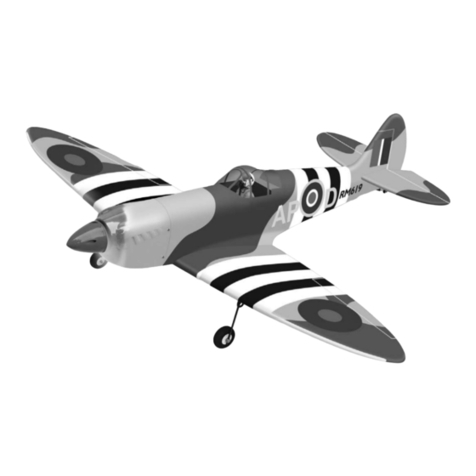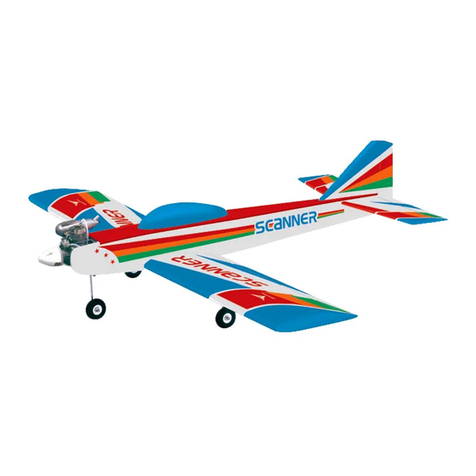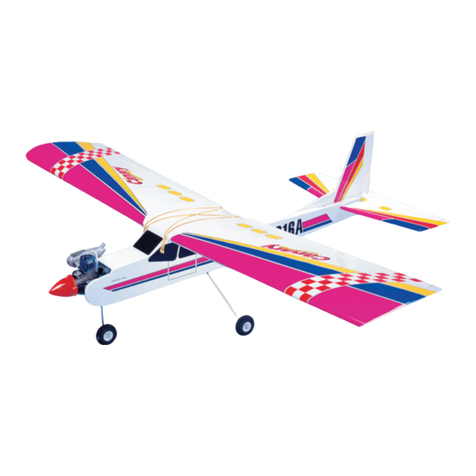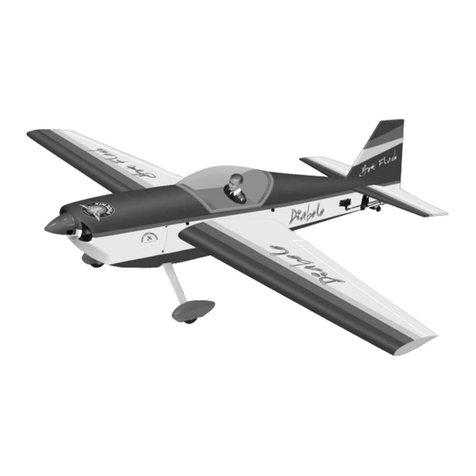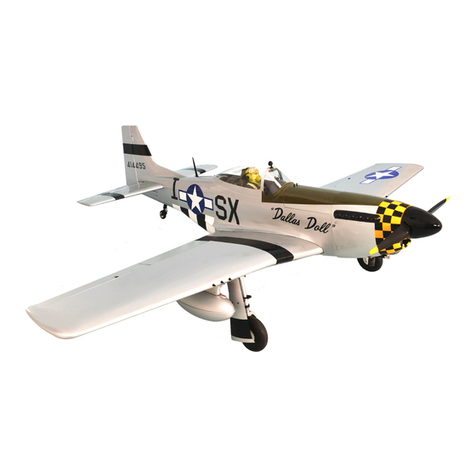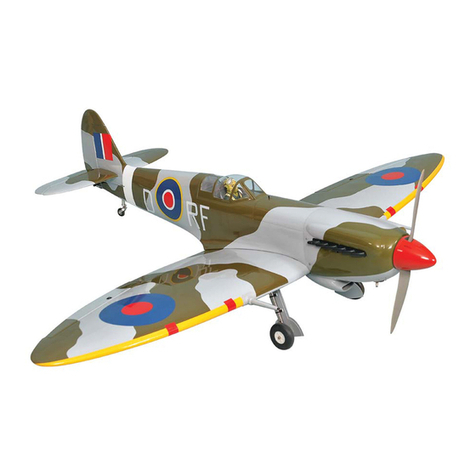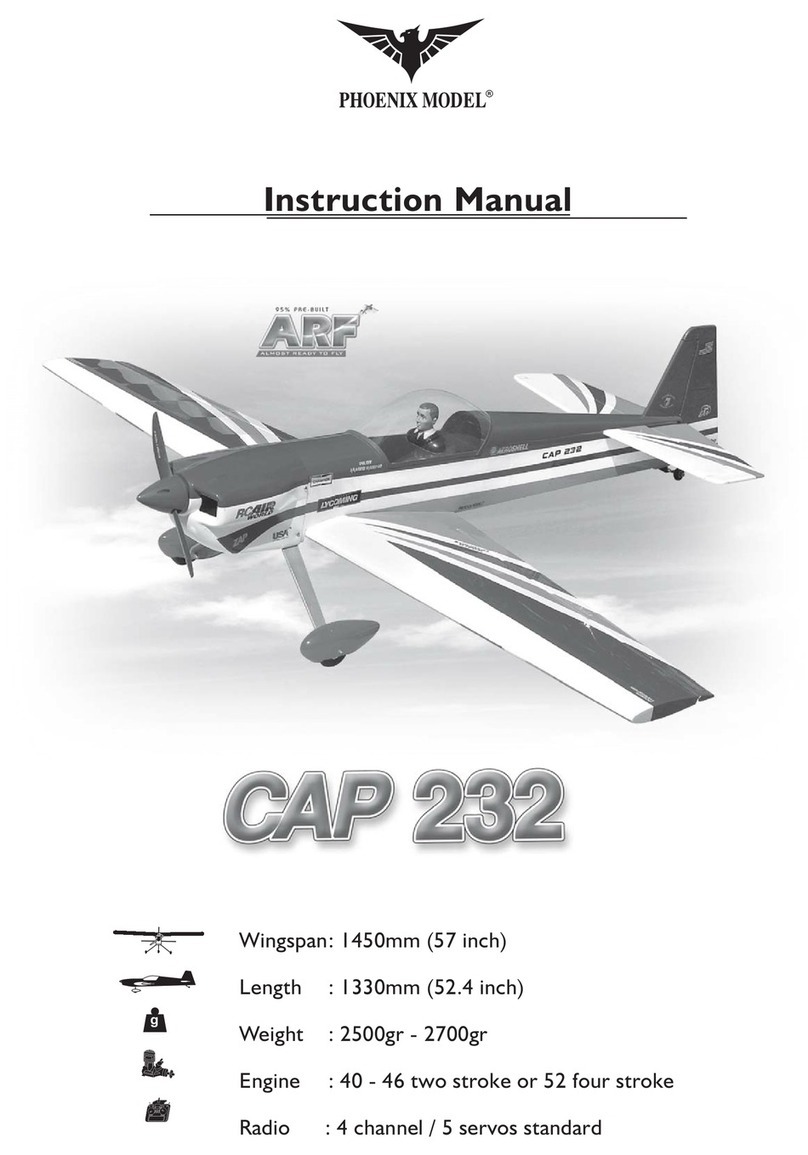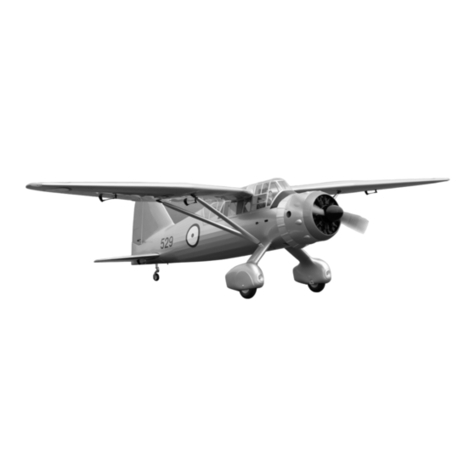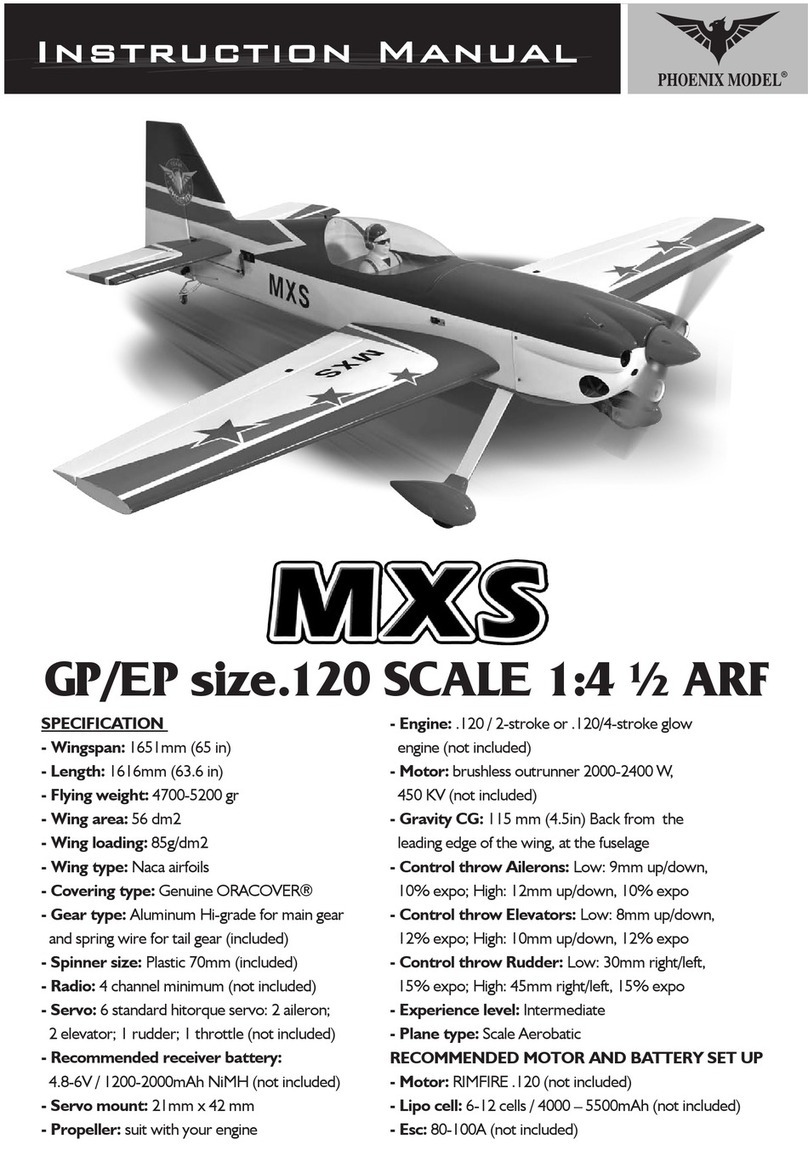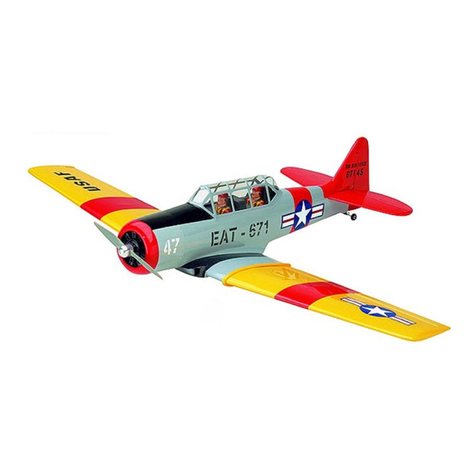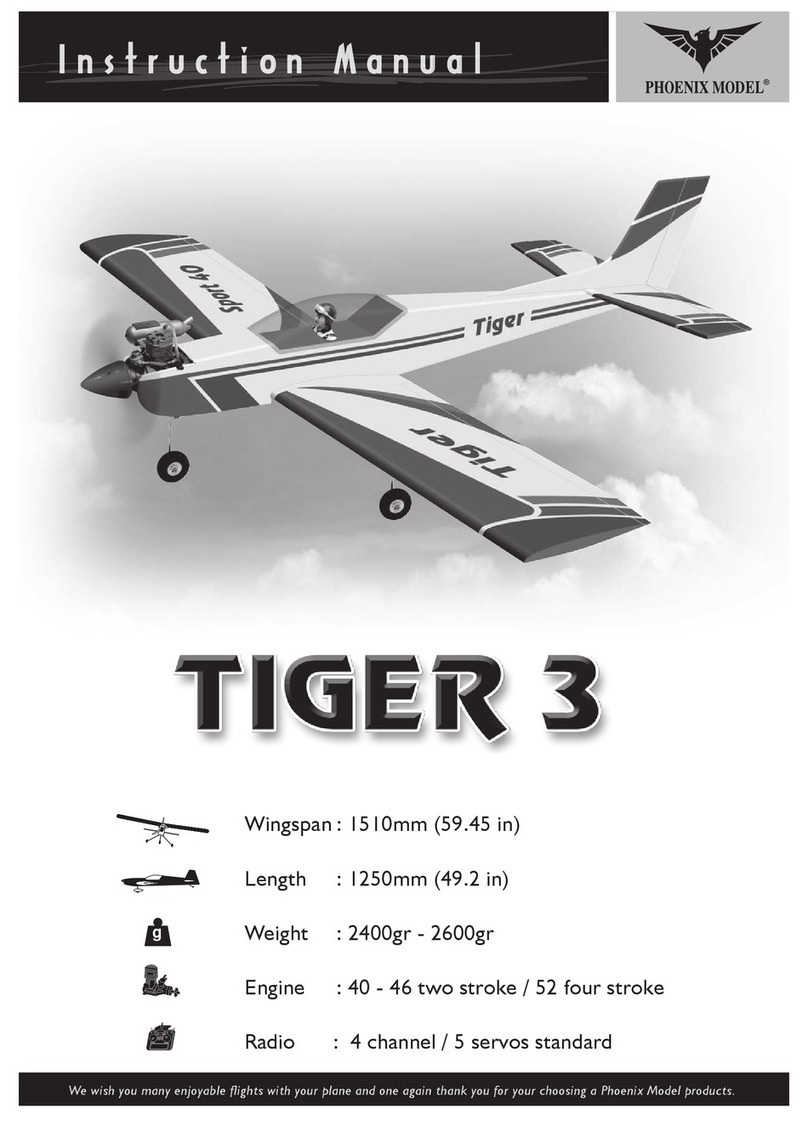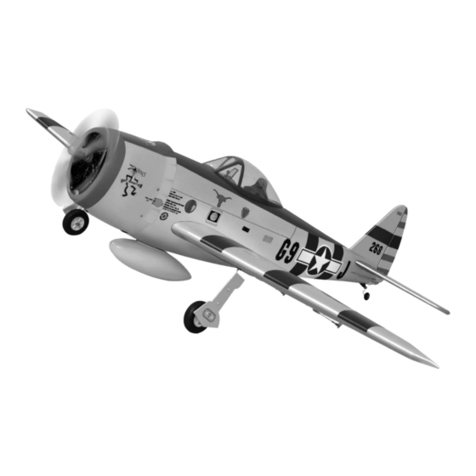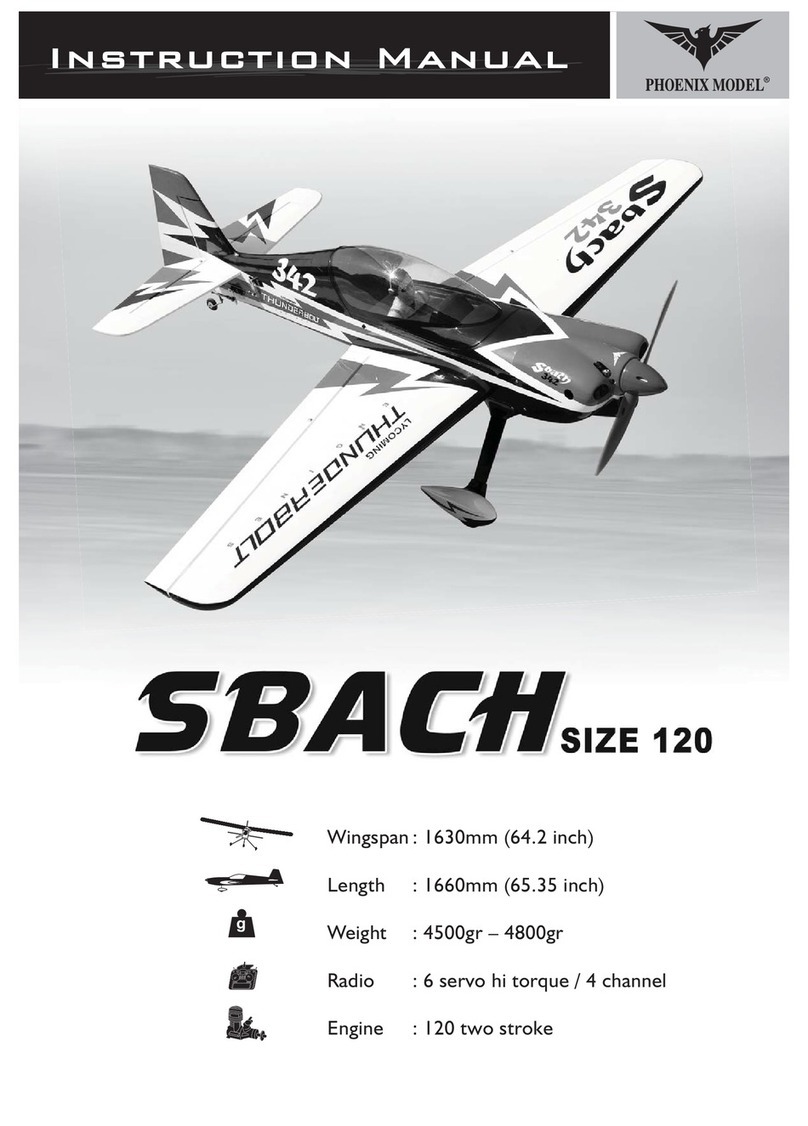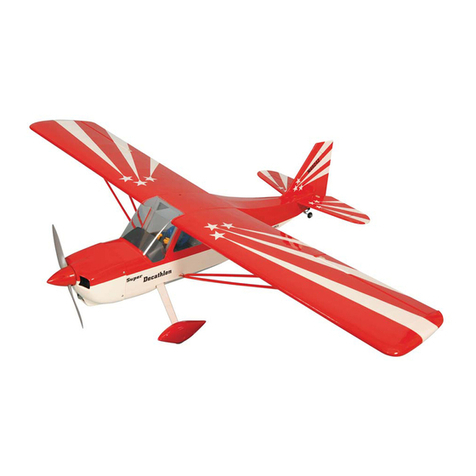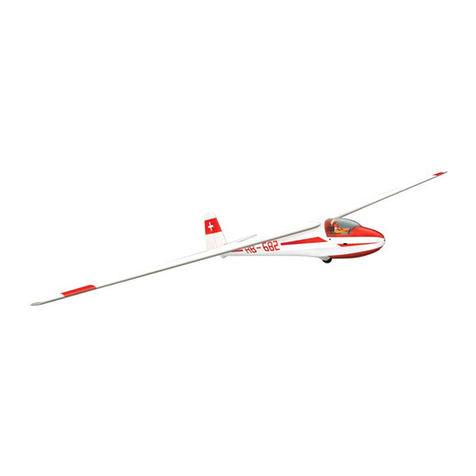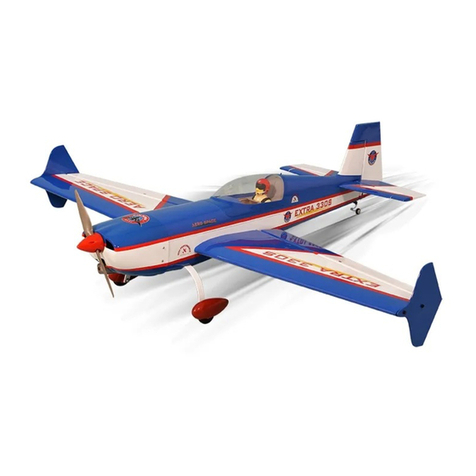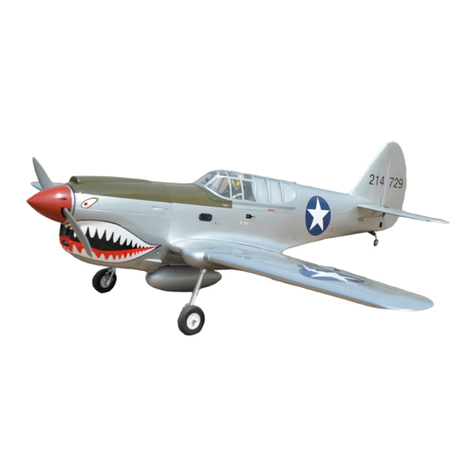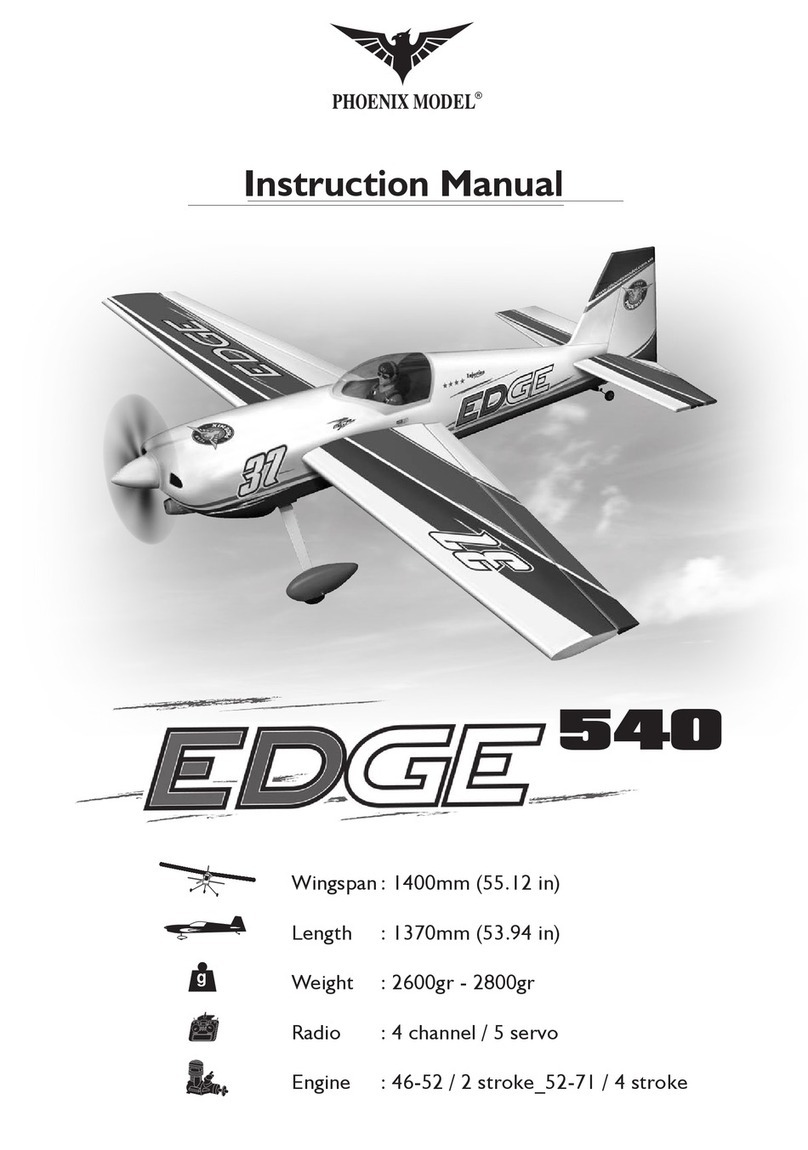
19. After sanding front of fuselage to shape
remove hatch and centrally mark position of
3mm hatch retaining dowel.
20. Drill hole in hatch for retaining dowel and
transfer position of dowel hole onto ply hatch
locating plate (use blunt end of glass headed
pin).
21. Drill Hatch dowel locating hole in fuselage. If
hole is slightly misaligned correct using spruce
wedges.
22. Mark position of hole for Hatch Latch on rear of
F2. Tape Hatch in place and drill 1.5mm hole
thro’ F2 into Hatch.
23. Prepare Hatch Latch for fitting.
24. Fit ply Latch plate support.
25. Epoxy Latch assembly in place. Grease latch
to avoid latch sticking.
26. Fit and hold wing in position and drill holes for
wing retaining dowel brass tubes (use drill
described on plan).
27. Epoxy 6swg Brass wing dowel retaining tubes
in place (photo shows Pzazz See plan!).
28. Mark and drill hole in wing for M5 Wing Bolt. Fit
ply reinforcing wing Bolt plate.
29. Assemble wing bolt plate as per plan.
30. Using the wing, align the wing retaining nut
plate, assemble and fit said plate. Use foam
rubber to assist holding wing bolt plate in
position.
31. Bolt wing in position and fit front and rear wing
fairings.
32. Fit Rudder & Elevator servos as shown on
plan.
33. Mount On/Off switch using switch plate
provided. Bend 1.5mm switch operating wire to
shape and dry fit. Remove before covering.
34. Draw two straight lines at a 120 degree angle
on scrap paper, cover in polythene. Dry fit two
halves of tailplane checking for good contact
when together. Place PVA glue along TP join
and pin tailplane to ‘plan’, hinge line down
taking care to ensure TP is square to building
board. Fit triangular TP joiner.
35. Place fuselage on flat surface and dry fit
Tailplane. Pin in place and check distance of
each TP back corner is the from the work
surface and to a centre point on F2.
36. Adjust Tailplane seat as necessary and when
satisfied glues in position using PVA.
37. Cut fuselage top to length. Angle at front is 45
degrees.
38. Bolt wing in position and fit front and rear wing
fairings.
39. Shape Tailplane and Ruddervators.
40. Cut Mylar Hinges to size (12mm x 25mm). Trim
corners to stop the digging in and roughen gluing
surface with Wet & Dry.
41. Hinge Ruddervators but do not glue until model is
covered.
Building the Wings
1. To protect the plan cover in either thin polythene
or cling film.
2. Join front & back 1.5mm sheeting. Use metal
straight edge to trim for a good joint. The
sheeting has been Laser cut but may require
further trimming due moisture changes in the
wood. Sellotape them together along the joint.
Hinge joint back and insert PVA glue. Place on
flat surface and wipe away excess glue. Run
Sellotape along top of joint. Weight down until
glue set. Repeat for other three pieces.
3. Accurately align bottom sheet on plan. Note rear
of sheet overhangs rear spar by 1.5mm.
4. Accurately mark position of mainspar on bottom
sheet and using a straight edge glue and pin
mainspar in place.
5. Elevate underside of sheeting at front and rear
with scrap to conform with airfoil profile
6. Omitting W1 glue wing ribs in position.
7. Check assembly of servo mounts and the servo
is a snug fit in the mount. Adjust as necessary.
8. Glue together Wing Servo Mount Assembly using
PVA and before glue sets fit mount into servo
bay between W4&5. Consult plan as they are
handed i.e. there is a left and right hand! Push
sides of servo mounts against W4&5 to make
good gluing contact.
9. Using guide lines on plan glue ribs in place. For
the servo bay ribs use servo mount for alignment.
10. Glue 6mm sq. strip onto front of Mainspar 1mm
from the top. Ensure that it is a snug fit between
ribs.
11. Build second Wing.
12. Trim and align root end of each wing panel.
Sweepback on trailing edge of wing is 38mm
(1.5ins). Glue panels together.
13. Glue 0.8mm ply floor panels in place.
14. Fit Spruce rear spar reinforcing strip. Ribs W1
ribs and 12mm sub-ribs W1A
15. Trim and fit 1.5mm top sheeting taking care to
ensure that it is making contact with both the
wing ribs and the mainspar. Use masking tape
across ribs to support sheet whilst glue sets.
16. Using a David Plane / 180 grade Wet& Dry
sanding block trim leading & trailing edge
sheeting until level with the wing ribs. When
satisfied place Sellotape along edge of sheeting
top & bottom to minimise glue overspill. Tip: Do
not try to align Sellotape with edge of sheet but
let it overlap and trim with a sharp scalpel.
17. Carefully plane / sand both rear spar and leading
edge to shape. Tip: when using David Plane set
blade at slight angle so that the cut is thinner on
